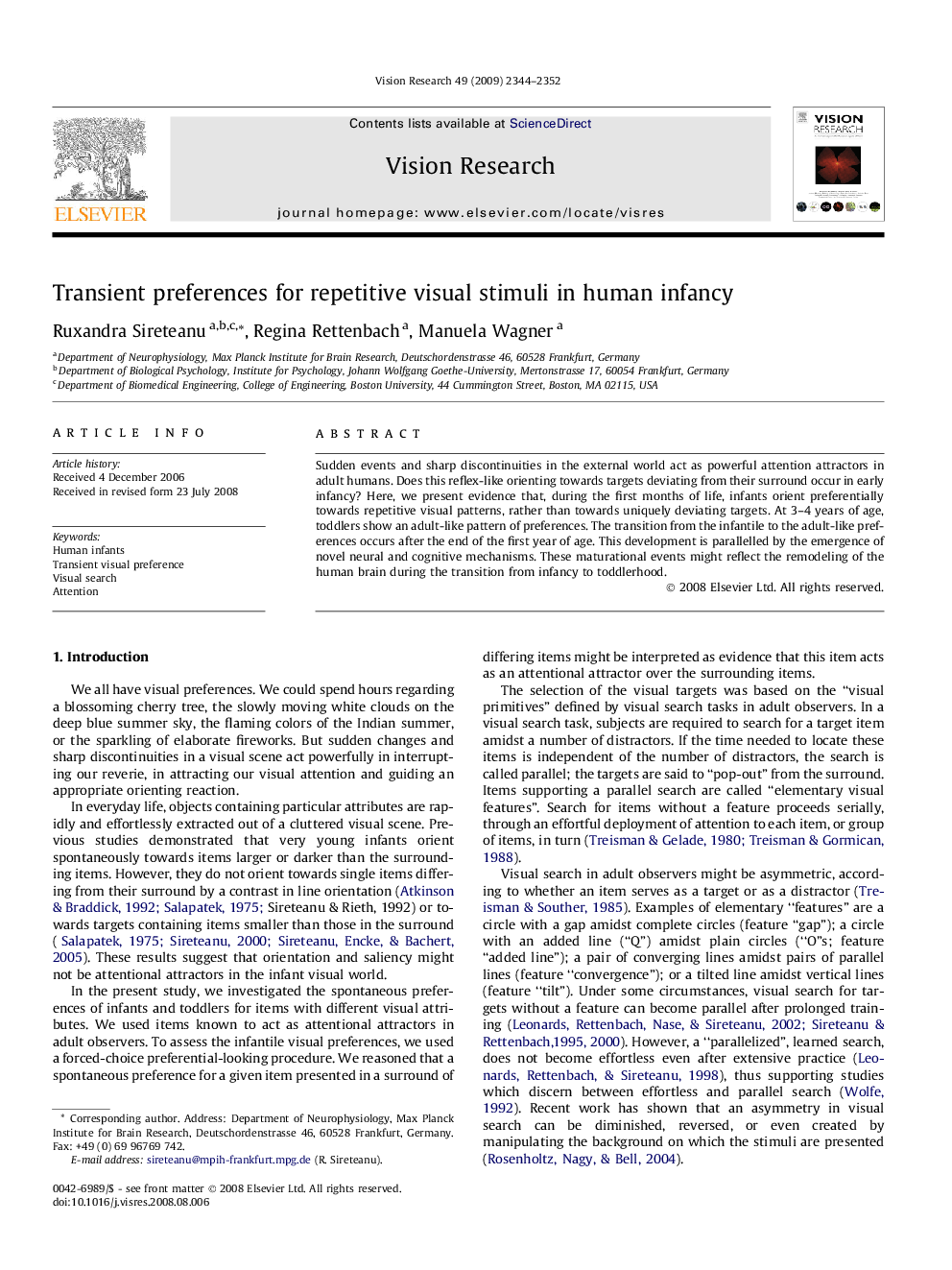| Article ID | Journal | Published Year | Pages | File Type |
|---|---|---|---|---|
| 4034657 | Vision Research | 2009 | 9 Pages |
Sudden events and sharp discontinuities in the external world act as powerful attention attractors in adult humans. Does this reflex-like orienting towards targets deviating from their surround occur in early infancy? Here, we present evidence that, during the first months of life, infants orient preferentially towards repetitive visual patterns, rather than towards uniquely deviating targets. At 3–4 years of age, toddlers show an adult-like pattern of preferences. The transition from the infantile to the adult-like preferences occurs after the end of the first year of age. This development is parallelled by the emergence of novel neural and cognitive mechanisms. These maturational events might reflect the remodeling of the human brain during the transition from infancy to toddlerhood.
